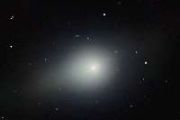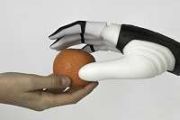
Copernical Team
Estonia to host Europe's new space cybersecurity testing ground

The European Space Agency (ESA) and the Estonian Space Office have set out to develop Europe's newest space cyber range that aims to make space technology more secure and accessible for companies across Europe. Last year, Estonian industry was invited to submit proposals for concepts, and today the contract has been signed with a consortium led by Spaceit to begin development.
Media invitation: last chance to see ESA’s Biomass satellite

Media invitation: last chance to see ESA’s Biomass satellite
Shenzhou XIX crew completes second spacewalk mission
 The crew of Shenzhou XIX aboard China's space station successfully carried out their second series of extravehicular activities (EVAs) early Tuesday, as confirmed by the China Manned Space Agency. The activities concluded at 1:12 am Beijing Time.
Astronauts Cai Xuzhe, Song Lingdong, and Wang Haoze worked for 8.5 hours during this operation, focusing on key tasks such as installing protecti
The crew of Shenzhou XIX aboard China's space station successfully carried out their second series of extravehicular activities (EVAs) early Tuesday, as confirmed by the China Manned Space Agency. The activities concluded at 1:12 am Beijing Time.
Astronauts Cai Xuzhe, Song Lingdong, and Wang Haoze worked for 8.5 hours during this operation, focusing on key tasks such as installing protecti Turn on the lights DAVD display helps navy divers navigate undersea conditions
 The USS Arizona Memorial in Pearl Harbor left a lasting impression on Dr. Sandra Chapman during childhood visits with her father. Now a program officer in the Office of Naval Research's (ONR) Warfighter Performance Department, Chapman channels this passion into advancing underwater technology. Recently, her efforts have supported the preservation of the historic site through the Divers Augmented
The USS Arizona Memorial in Pearl Harbor left a lasting impression on Dr. Sandra Chapman during childhood visits with her father. Now a program officer in the Office of Naval Research's (ONR) Warfighter Performance Department, Chapman channels this passion into advancing underwater technology. Recently, her efforts have supported the preservation of the historic site through the Divers Augmented New marsquake data sheds light on the Martian crust mystery
 New research from The Australian National University (ANU) and the Chinese Academy of Sciences has unveiled insights into Mars' geological evolution. Analysis of marsquakes-seismic events similar to earthquakes-could clarify the processes that shaped the planet over billions of years.
The study addresses the long-standing mystery of the Martian dichotomy, where the southern hemisphere's cr
New research from The Australian National University (ANU) and the Chinese Academy of Sciences has unveiled insights into Mars' geological evolution. Analysis of marsquakes-seismic events similar to earthquakes-could clarify the processes that shaped the planet over billions of years.
The study addresses the long-standing mystery of the Martian dichotomy, where the southern hemisphere's cr Mysterious Martian mounds formed by ancient water
 Over 15,000 mounds are scattered across Chryse Planitia in Mars' lowlands - but until recently, no one knew how they got there.
Scientists have dug into the history of these geological features ahead of a new mission to the red planet, revealing a time when water flowed across its surface.
Large parts of Mars' highlands may have been washed away four billion years ago.
While th
Over 15,000 mounds are scattered across Chryse Planitia in Mars' lowlands - but until recently, no one knew how they got there.
Scientists have dug into the history of these geological features ahead of a new mission to the red planet, revealing a time when water flowed across its surface.
Large parts of Mars' highlands may have been washed away four billion years ago.
While th Blue Ghost Advances Lunar Mission Milestones
 Firefly's Blue Ghost lunar lander continues its ambitious mission to the Moon, transporting 10 NASA science and technology payloads. Now four days into the mission, the spacecraft has successfully completed its first main engine burn. This critical maneuver sets the stage for Blue Ghost to follow a precise trajectory toward the Moon. The mission plan involves a 25-day Earth orbit phase, after wh
Firefly's Blue Ghost lunar lander continues its ambitious mission to the Moon, transporting 10 NASA science and technology payloads. Now four days into the mission, the spacecraft has successfully completed its first main engine burn. This critical maneuver sets the stage for Blue Ghost to follow a precise trajectory toward the Moon. The mission plan involves a 25-day Earth orbit phase, after wh Rocket Lab schedules next Electron launch for IoT constellation operator
 Rocket Lab USA, Inc. has announced the upcoming launch of its Electron rocket for Kineis, a global Internet-of-Things (IoT) connectivity provider. This mission, titled "IOT 4 You and Me," is scheduled to lift off during a launch window opening on February 4th, NZDT. The daily launch opportunity within this window is at 09:43 am NZDT (20:43 UTC).
The launch will take place at Rocket Lab's L
Rocket Lab USA, Inc. has announced the upcoming launch of its Electron rocket for Kineis, a global Internet-of-Things (IoT) connectivity provider. This mission, titled "IOT 4 You and Me," is scheduled to lift off during a launch window opening on February 4th, NZDT. The daily launch opportunity within this window is at 09:43 am NZDT (20:43 UTC).
The launch will take place at Rocket Lab's L Extreme supersonic winds detected on distant exoplanet
 Astronomers have observed remarkably powerful winds on the giant exoplanet WASP-127b, located over 500 light-years from Earth. These winds, clocked at an extraordinary 33,000 km/h, represent the fastest jetstream ever identified on any planet. The findings were made using the European Southern Observatory's Very Large Telescope (ESO's VLT) in Chile, offering fresh insights into extreme weather c
Astronomers have observed remarkably powerful winds on the giant exoplanet WASP-127b, located over 500 light-years from Earth. These winds, clocked at an extraordinary 33,000 km/h, represent the fastest jetstream ever identified on any planet. The findings were made using the European Southern Observatory's Very Large Telescope (ESO's VLT) in Chile, offering fresh insights into extreme weather c NASA Sets Sights on Mars Terrain with Revolutionary Tire Tech
 The mystique of Mars has been studied for centuries. The fourth planet from the Sun is reminiscent of a rich, red desert and features a rugged surface challenging to traverse. While several robotic missions have landed on Mars, NASA has only explored 1% of its surface. Ahead of future human and robotic missions to the Red Planet, NASA recently completed rigorous rover testing on Martian-simulate
The mystique of Mars has been studied for centuries. The fourth planet from the Sun is reminiscent of a rich, red desert and features a rugged surface challenging to traverse. While several robotic missions have landed on Mars, NASA has only explored 1% of its surface. Ahead of future human and robotic missions to the Red Planet, NASA recently completed rigorous rover testing on Martian-simulate 



























